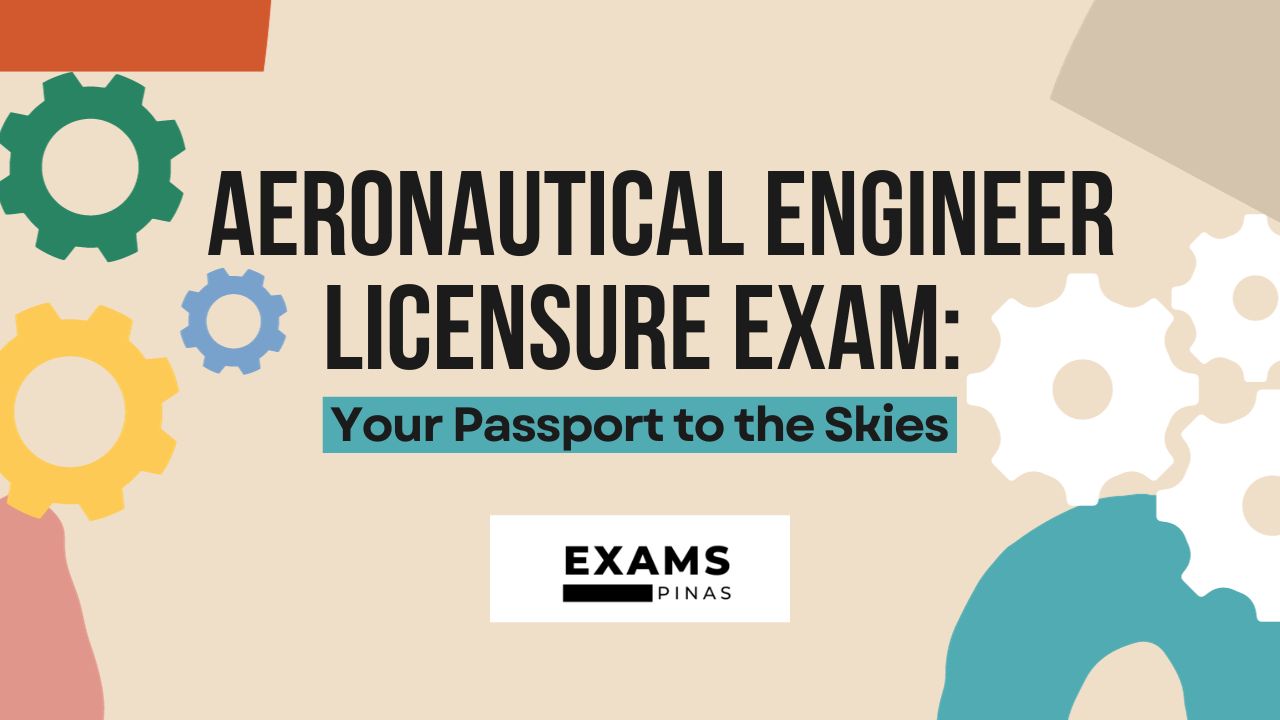Becoming a licensed aeronautical engineer opens doors to a dynamic and exciting career in the aerospace industry. This article serves as your comprehensive guide to mastering the Aeronautical Engineer Licensure Examination. We’ll delve into essential strategies, resources, and expert insights that will empower you to excel in this pivotal exam.
Understanding the Significance of Aeronautical Engineering
Aeronautical engineering is a discipline at the forefront of technological advancement, encompassing the design, development, and maintenance of aircraft and spacecraft. Licensed aeronautical engineers play a crucial role in ensuring the safety, efficiency, and innovation of aviation systems.
Preparing for Success: Key Strategies
**1. Early and Structured Preparation
Begin your preparations well in advance. Establish a structured study schedule that covers all relevant topics. Emphasize core subjects such as aerodynamics, propulsion systems, and materials science.
**2. Utilize Comprehensive Study Resources
Invest in quality study materials, including textbooks, practice exams, and review courses. These resources offer valuable insights into the exam format and content.
**3. Engage in Practical Application
Apply theoretical knowledge through hands-on experiences. Seek internships, participate in aeronautical projects, and explore opportunities for practical learning.
Navigating the Examination Process
**1. Familiarize Yourself with Exam Structure
The Aeronautical Engineer Licensure Exam, formally known as the Aeronautical Engineer Board Exam, is administered by the Board of Aeronautical Engineering under the jurisdiction of the Professional Regulatory Commission. Its purpose is to ascertain the proficiency of graduates in BS Aeronautical Engineering.
**2. Exemption from Civil Service Exams
According to R.A. 1080, individuals who successfully clear this exam are exempted from undertaking civil service exams, thereby becoming eligible for a diverse array of esteemed positions, including but not limited to:
- Aircraft Structural Engineer
- Aircraft Design Engineer
- Aircraft Power Plant Engineer
- Aircraft Manufacturing Engineer
- Aircraft Maintenance Engineer
- Aircraft Operation/Performance Engineer
- Professor
- Consultant
**3. Exam Scope: Embarking on a Comprehensive Journey
This licensure examination encompasses a wide array of subjects, encapsulating the quintessence of your five-year academic expedition. Here’s a detailed breakdown:
Aircraft Structures and Design – 20%
- Fundamentals of Aircraft Design
- Grasping Structural Loading Conditions
- Analysis and Design of Airframe Components, Including Landing Gears
- Engine Mounts and Other Vital Structural Elements
- Non-structural Component Design
Aircraft Construction, Repair, and Modification – 15%
- Mastery of Aircraft Materials and Processes
- Application of Methods and Techniques for Repair and Modification in Accordance with Civil Airworthiness Regulations
- Insight into Manufacturing/Production Processes and Ensuring Quality Assurance
Aerodynamics – 25%
- Grasping the Fundamentals of Low-High Speed Aerodynamics
- Applying Aerodynamics to Fixed/Rotary Wing Aircraft Configurations
- Understanding Performance, Stability, and Control
- Exploring Wind Tunnels and Their Applications
Mathematics – 10%
- Proficiency in Algebra, Trigonometry, and Analytical Geometry
- Application of Calculus and Differential Equations with Relevance to Aeronautical Engineering
Aircraft Power Plant – 20%
- Mastering Thermodynamics and Power Plant Design and Operation Principles, with Applications to Internal Combustion Engines, Reciprocating Engines, Aircraft Gas Turbines, Pulsejet, and Ramjet, as well as Rocket Propulsion Systems and Other Aircraft Power Systems
Engineering Economics and Management Laws and Ethics – 10%
- Understanding Principles of Economics and Management as Applied to the Aviation Industry
- Familiarity with Laws, Rules, and Regulations Governing the Practice of Aeronautical Engineering, including PD 1570, as well as the Code of Professional Ethics of the Board of Aeronautical Engineering and other relevant bodies.
Seeking Additional Support
**1. Join Professional Associations
Engage with organizations such as the American Institute of Aeronautics and Astronautics (AIAA) or local aeronautical engineering groups. These networks provide valuable resources and opportunities for knowledge exchange.
**2. Participate in Study Groups
Collaborate with peers and mentors. Group discussions and study sessions offer diverse perspectives and clarify complex concepts.
Embracing Continuous Learning and Growth
Aeronautical engineering is an ever-evolving field. Stay updated with industry trends, technological advancements, and regulatory changes. Engage in professional development programs and workshops.
Conclusion: Soaring to New Heights
Mastering the Aeronautical Engineer Licensure Exam is not just a milestone; it’s a passport to a fulfilling and impactful career. By employing strategic study techniques, accessing quality resources, and engaging with the aerospace community, you’re poised for success. Take flight on this incredible journey and become a licensed aeronautical engineer, contributing to the advancement of aviation and space exploration.
Remember, this comprehensive guide is designed to equip you with the tools and knowledge you need to excel. Your dedication and preparation are the keys to unlocking this exciting chapter in your professional journey. Safe travels and may your aspirations in aeronautical engineering take you to soaring heights!

